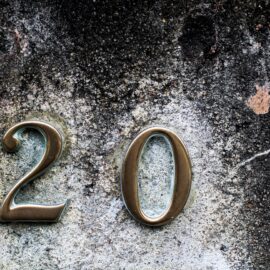

This article is an excerpt from the Shortform book guide to "The Barefoot Investor" by Scott Pape. Shortform has the world's best summaries and analyses of books you should be reading.
Like this article? Sign up for a free trial here .
How much money do you need to retire in Australia? What are some considerations for Australian retirement planning?
Australia is hardly a cheap country to spend your retirement. To retire comfortably, singles will need will need an estimated $43,317 and couples—$60,997 per year. With this in mind, the earlier you start planning your retirement, the better off your golden years will be.
Here are three pieces of advice Australian citizens should consider when planning their retirement.
Australian Retirement Planning Tips
The Australian government estimates that its citizens need the following amount of money each year of retirement to be able to live comfortably: $43,317 for singles and $60,997 for couples. The following retirement planning tips will help Australian citizens reach these figures faster to be able to enjoy a peaceful and comfortable retirement.
1. Pay Your Mortgage Early
Due to interest payments, you’ll pay more than the cost of your home over the lifetime of your loan. To limit how much interest you pay over the life of your mortgage, work to pay it off faster. You can also try calling your bank to negotiate a lower rate. Tell the bank that you’re planning to switch to another bank with a lower interest rate unless they give you a 0.5 percent discount. This step is best attempted when you already own 20 percent of your home.
2. Save Enough Money in Super
- Singles: $170,000
- Couples: $250,000
In Australia, when you retire, you’re required to withdraw 5 percent of your super per year, or $12,500 for couples, to start. This amount increases slightly as you age because the government doesn’t want you hoarding your money.
These previous figures represent the maximum amount you’re allowed to have in assets—excluding a paid-off home—to qualify for the highest annual pension, which is:
- $24,081.20 for singles
- $36,301.20 for couples
(Shortform note: Australian pensions are similar to Social Security in the U.S., except how much an individual receives depends on assets rather than on earnings in their lifetime.)
3. Continue Working
Just working a day or so per week is plenty to bring in some extra cash. Plus, studies indicate that retirees who continue doing some kind of work have better mental health than their non-working counterparts.
The Australian government provides a special perk to encourage you to continue working once you retire—you can earn up to a certain amount without paying income tax:
- Singles: $32,279
- Couples: $57,948
But you don’t need to earn nearly that much to be comfortable. For a couple, if each of you only worked one day per week, you’d earn about $300 per couple per day of work, for a total of $15,600 per year.
If you follow these three steps, you’ll have roughly this amount per year of your retirement:
- Part-time work: $15,600
- Super: $12,500
- Pension: $36,301.20
- Total: $64,401.20
That’s about $3,400 more than the government recommends for a comfortable retirement.

———End of Preview———
Like what you just read? Read the rest of the world's best book summary and analysis of Scott Pape's "The Barefoot Investor" at Shortform .
Here's what you'll find in our full The Barefoot Investor summary :
- A 10-step plan to eliminate debt and build wealth
- How you can increase your income
- Why you need to focus on cultivating long-term investments






